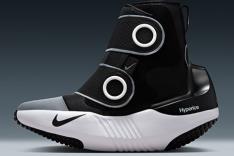
Developing a training plan that looks good on paper is one thing. Determining whether or not this training plan is actually working is another.
In order to achieve peak fitness for those one or two big cycling events you plan to tackle during the year, you'll need to set up several tests to track your progress and determine the effectiveness of your workouts.
Whether you're looking to improve your sprinting, VO2 Max, or lactate threshold, below are a few easy tests you can do throughout the year that will help you decide if you need to alter your training plan to achieve your season's goals.
Testing Considerations
When you set up up a test, you'll need to create an environment that you can easily replicate. For this reason, completing your cycling fitness tests outdoors isn't recommended. Wind, traffic and stop signs are just a few of the factors that can change from day-to-day and throw off your test results.
Instead, completing your tests on an indoor trainer will make it easier to keep most of your variables the same each time you decided to test your fitness.
A few of the factors you'll want to make sure you keep consistent include:
- The time of day you do the test
- The equipment you use
- The amount of resistance on your trainer
- Your tire pressure
- The temperature during the test
- Your level of fatigue from previous training rides
In addition to an indoor trainer, a power meter will make it easier to achieve accurate metrics. If you don't have a power meter, a computer with speed or heart rate data will work but may not provide calculations that are as accurate.
Sprint Test
Duration: Six seconds
How to test: Set your trainer up on a level surface. Because the test is of a short duration, choose a resistance level that won't be too difficult to get up to speed but will allow you to reach top speed without changing gears. From the standing position, sprint as hard as you can for six seconds.
The numbers to compare: After the test, look at your peak wattage (or max speed) achieved. Also, document your average power over the entire test. These are the numbers you'll use to compare your fitness in the future.
VO2 Max Test
Duration: Three minutes
How to test: Pacing during a VO2 max test takes a lot of energy. It will require an all-out effort for the entire three minutes, but if you start out sprinting you won't have enough in the tank to finish strong. The goal is to produce the highest average wattage possible for the duration of the test. Choose a gear or resistance that you can stick with and won't force you to shift to an easier gear toward the end of the effort.
The numbers to compare: At the end of the test, write down your average power (or speed) over the entire effort. In addition, document your average wattage per minute. This will help determine if your effort was even. The minute you achieved the highest average power will also be used for comparison in future tests.
Lactate Threshold Test
Duration: 20 minutes
How to test: Pacing is key to doing this test correctly. If you've done the test before, pick a wattage or speed that you know you can maintain for the full 20 minutes. After the first 10 to 15 minutes, you can increase your effort as needed. At the end of the test, you should have emptied your tank completely.
The numbers to compare: This test is a key barometer in determining overall cycling fitness. To determine your lactate threshold, do the following calculation:
- 0.95 x your average power for the 20-minute test = lactate threshold
This number will give you the wattage you should achieve during a 1-hour time trial effort. Use this number and compare it to future tests.
Related Articles:
 Ready to ride? Search for a cycling event.
Ready to ride? Search for a cycling event.







Discuss This Article